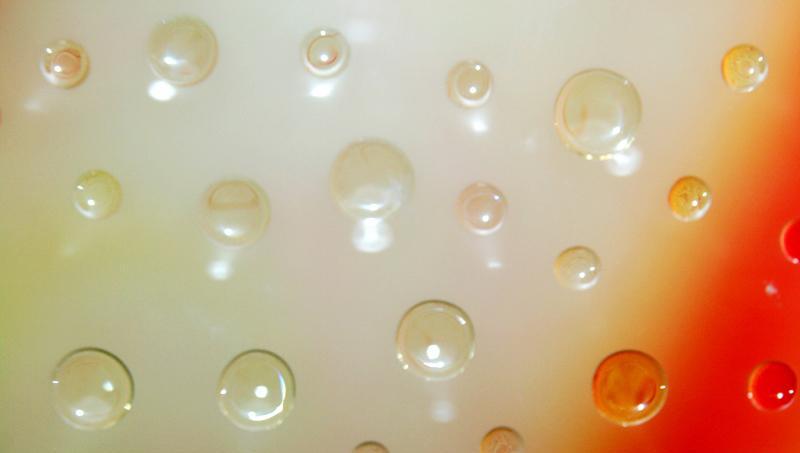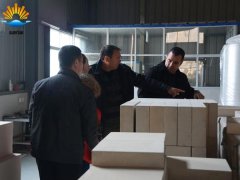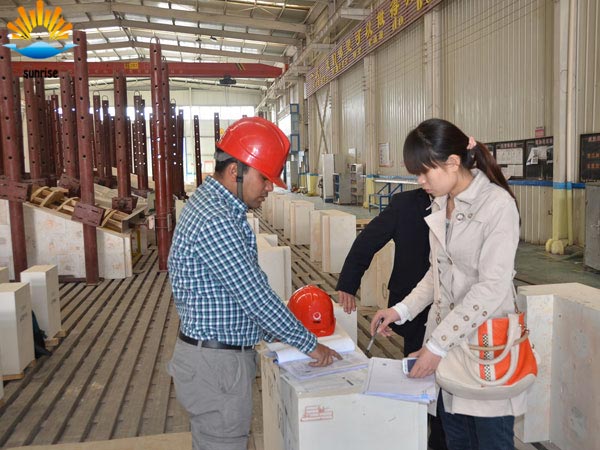Reasons for the Bubbles in the Float Glass
Date:2016-03-15 11:47 From:Zhengzhou Sunrise Refractory Author:sunrise
In the actual production, there are many reasons for the bubbles in the float glass. Classifying the bubbles according to its source can help find out the reasons and appropriate solutions.

Generally speaking, bubbles in the float glass are mainly produced during the melting process and then molding in the tin bath. The first type of bubbles is refined bubbles residual in the glass after the primary melting and refining. The second is caused by the re-deposition of dissolved gases. The third is bubbles entrained gas, liquid or solid foreign objects. They are air bubbles, work bubbles, iron bubble and pollution bubbles caused the impurities and refractory materials. Distinguishing the type of bubbles can help speculate in which area the defects are produced.
According to the reasons of bubbles, bubbles can be divided into primary bubbles, secondary bubbles, external air bubbles, bubbles caused by refractory materials and impurities, etc..
1) Primary bubbles
After refining, some air or gases is not completely removed, or re-deposited from glass liquid. Those air and gases remain in the glass and produce the primary bubbles.
As we all know, when the formulation is the same, the refining of glass liquid can be affected by different reasons: whether the ingredients in the raw materials that can produce gases can intensively decompose and release gases, whether the tiny unreleased bubbles can be dissolved in the glass and disappear., whether the dissolved gases in the melt can be deposited from the melt quickly, whether the deep flow at the beginning of the refining flow can proceed smoothly upward and release bubbles, the refining temperature, time, external pressure, etc..
2) Secondary bubbles
The refined glass liquid should be in equilibrium state with gases dissolved in it. When the conditions are changed, bubbles or gray bubbles will appear again in the glass liquid. Those are the secondary bubbles.
Under normal production conditions, the external factors will not cause the reheating of glass liquid and the sudden change of the atmosphere and result in the re-deposition of gases in the. Only the reflux of the melting zone and cooling zone can cause the reheating of glass liquid or malfunction causes the sudden change of the atmosphere which can cause the re-deposition of gases.
3) External air bubbles
Those bubbles are caused by the poor working condition of the blender such as bad bubbling and entangling when molding. If handled properly, those bubbles are easy to exclude.
4) Bubbles caused by refractory materials
The impurities or pores in the refractory materials may cause bubbles when in contact with the glass liquid. The pores, iron or carbon can react with the glass and cause bubbles. The gases exhausted from the pores in the refractory of the cooling zone and molding zone or the reduction of iron silicate may produce a large amount of tiny bubbles. It is at greatest risk when the bubbles near the molding area such as the launder bricks.
5) Bubbles caused by impurities
Some solid or liquid inclusions can directly enter the melt such as the duct or condensate. The substances in the refractory materials or metals enter the melt due to the corrosion. both can cause bubbles.
Send an Inquiry
E-mail : sales@sunriserefr.com
Phone : +86-371-63838939 / Fax:+86-371-63835539
Company Address : No.36 Fengchan Road Of Zhengzhou, Henan, China (Mainland)

If you have any needs our help or are interested in our products, you can click online advisorychat with us online, or call our customer service telephone: 0086-0371-63838939. We will sincerely serve for you!
Product Category
- Fused Cast AZS
- Fused Cast AZS Block
- Fused Cast Skid Rail Block
- Fused Cast High Zirconia Block
- Fused Cast AZS Block
- Fiber Products
- Insulation Series Brick
- Fireclay Brick
- High Alumina Brick
- Corundum Brick
- Sillimanite Brick
- Mullite Brick
- Zircon Mullite Brick
- Zircon Brick
- Magnesia Brick
- Silica Brick
- Fused Cast Alumina Block
- Glass Mould Brick
Refractory Knowledge
moreCase

UAE to our factory inspection bri
...

Venezuela customer AZS fused bric
Venezuela customer AZS fused float glass furnace br...





